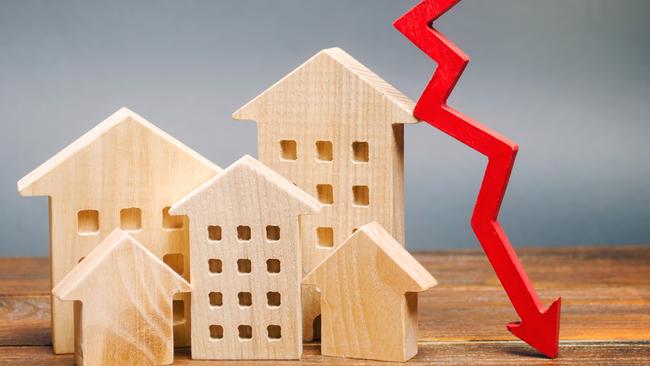
What! So soon?
Every weekend we hear of ludicrous scenes at auctions where rival bidders slug it, out pushing prices higher than estimates.
And we all know that waiting for prices to drop has been a loser’s game for most people, most of the time.
What’s more, we have recently endured the rarest of events — the double dip — when house prices fell 3 per cent in 2015 and then managed a 15 per cent tumble over the years 2017 to 2019.
Still, there are plenty of reasons to be sceptical of this latest boom, even if the major banks are suggesting prices will lift by 20 per cent.
This is a most unusual property market: we have unusually low interest rates, unusually thin volumes of investor activity in the market and the complete absence of new immigrants looking to buy a home.
On that basis alone, we certainly have to consider what the Cassandras are saying.
After all, we are in a period of accelerating cycles. Everything happens faster than we expect. Just look at the local sharemarket, up nearly 50 per cent from its low point a year ago.
Let’s just briefly take a look at the arguments put forward by three very different voices in the wider market. Importantly, these are not headline-seeking operators putting out absurd claims of spectacular price falls that will vault them onto prime time television. Rather they are all experienced and credible sources from different walks of life.
Bob Cuneen is senior economist at the fund manager MLC with a wide brief to look over the local and international economy. He believes house prices will drop 7 per cent in 2022. He also believes that when we get to the end of this calendar year the 12 month house price growth will be a modest 9 per cent which is a lot less than many in the market are talking about.
Stephen Koukoulas is managing director of Market Economics and a former global head of research for TD Securities. Commenting on a 58 per cent leap in building approvals (year on year for the month of February), he says: “The preconditions are now in place for a period of weak house prices — we have moribund demand and plentiful supply.”
Stuart Wemyss of ProSolution Private Clients is a high-profile financial adviser (and regular contributor to The Australian). He is warning of a flat market rather than a drop in absolute terms. Wemyss believes that pretty soon the number of sellers in the market will increase to match the buyers that are currently chasing a relatively low volume of properties for sale. As he says: ‘‘Buyer exuberance is rarely sustained for long periods of time.”
As Wemyss likes to point out, exceptional prices for exceptional properties will always occur and in this market those stories will be even more extraordinary, but they must be put in perspective.
This weekend no doubt somewhere in Australia some lucky homeowner will sell their house for a price that is wildly in excess of all estimates. But there will be thousands of auctions where the action might be lively but not worthy of headlines.
The common denominator among the sceptics is the lack of supply in this market and its implication of softer prices next year once more housing stock comes on the market.
Keep in mind that for all the attention on higher prices, the market has actually shrunk.
As research specialist SQM pointed out this week, there are significantly fewer houses for sale now compared to a year ago: ‘‘National residential property listings slipped in March 2021 by 0.5 per cent, falling to 256,568 from 257,952.
Compared to 12 months ago, listings were down by 16.7 per cent.” No doubt all these rational prognostications on the housing market make sense in isolation.
The thing is, they are only a dimension of home price dynamics.
What matters just as much is: will house buyers continue to believe residential property is worth these prices or will they turn against this asset class as sharply as they turned towards it this year?
In our last mini boom in the residential property market the regulators were able to cool the whole thing down by changing the rules so banks had to restrict property lending. This time round rates are even lower and ‘‘macroprudential’’ moves may not be enough to end the party.
The monthly rise of 2.8 per cent in March was the strongest jump in house prices we have seen since October 1988.
What actually happened back in 1988? House prices rose by about 12 per cent and then they rose by close to 24 per cent in 1989, bringing the cumulative lift to more than 35 per cent in two years.
Here’s what happened next: between 1990 and 1991 prices fell by near 10 per cent.
For now all signals suggest that national residential property prices can keep rising higher for the rest of this year at least. But forecasting any further out would be a dangerous business indeed.




Just when absolutely everyone is buzzed up on the prospect of escalating house prices the killjoys arrive armed with some sobering forecasts: they think prices will drop next year.